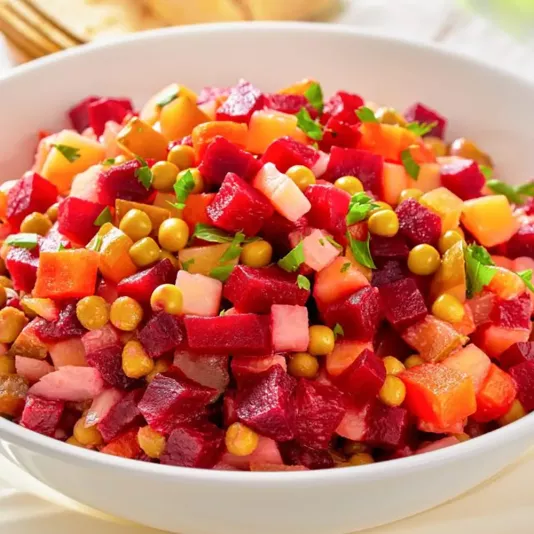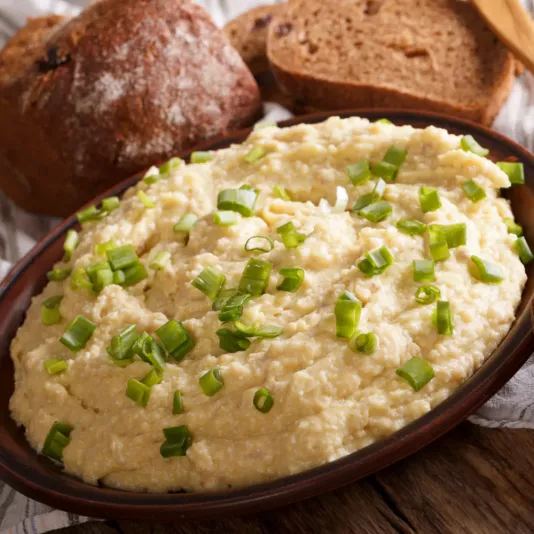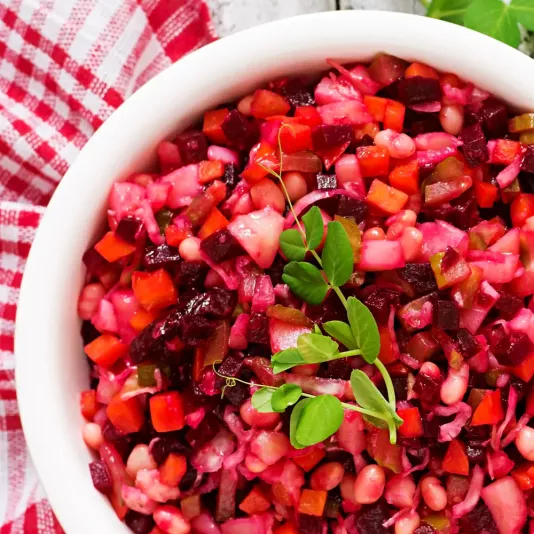Jewish Cuisine
Jewish Cuisine was shaped by various regions where Jews lived, but it always preserved a common spirit. It is a cuisine of thoughtful ingredient use, attentiveness to kosher laws, and deep respect for family traditions. Over years of cooking, I’ve realized that its essence lies in balance – between simplicity and precision. Even a simple broth here has its philosophy: it must be clear, aromatic, and good enough to serve not only on Shabbat but any day. The value of this cuisine lies in the combination of warmth and practicality, in the habit of cooking not in haste but with understanding of the process. Each dish carries its own story, and that’s what gives it special depth.
Recipes of Jewish Cuisine
Jewish cuisine is the embodiment of prudence and respect for ingredients. In my experience, it has taught me not to rush: to simmer broth slowly, let the challah dough rise unhurriedly, and clean and mix the fish for gefilte with onions so the flavor is soft and balanced. These recipes have been tested for decades, and even young homemakers just starting out can feel their reliability and stability. When cooking such dishes, it’s important not only to follow the recipe but to feel the rhythm of the process – how the broth slowly bubbles, how the aroma of yeast dough fills the kitchen, how the golden crusts of challah brown in the oven. Jewish cuisine is not about display but about meaning: every movement has purpose and continues tradition. I always feel proud when I can preserve the true taste – the one that needs no embellishment, for it holds the essence of home.
History and Traditions of Jewish Cuisine
Jewish cuisine was born from a combination of religious laws, household restrictions, and remarkable ingenuity. Over the years, I’ve realized that its main feature is adaptation without losing the soul. Where mixing meat and dairy was forbidden, homemakers created entire separate worlds of flavor: tzimmes with honey and dried fruits, rich chicken broth, sweet kugel or matzo babka. These restrictions do not impoverish but teach respect for rules and harmony. Jewish cuisine cannot exist without traditional holidays – Shabbat, Passover, Hanukkah – each with its symbolic dishes. For example, during Passover, matzo is prepared as a symbol of purity, while during Hanukkah, latkes are fried in memory of the miracle of oil. This is not just cooking but a living culture, where each recipe is the memory of generations passed down through hands, aromas, and the warmth of the family table. In these dishes, one feels time, shared prayer, the anticipation of the Sabbath evening – all that makes Jewish cuisine profound and spiritual.
Main Ingredients and Cooking Principles
In my practice, the most important principle of Jewish cuisine is purity of taste. Ingredients must be fresh, carefully selected, without random additives. Meat is prepared without dairy, so vegetable purees or eggs are used for tenderness. Grains form the basis of many dishes: challah, kugel, poppy porridge, rolls for Shabbat. Potatoes, carrots, and onions – common ingredients – in skilled hands become true comfort. Jewish homemakers value patience: slow simmering, long steeping, steady baking. I always emphasize that success depends on respect for time. If a dish needs to “rest” under a lid, it must be given that time, for that’s when its true flavor unfolds. Equally important is how ingredients are stored: separate utensils for meat and dairy, cleanliness of the workspace, attention to detail. These principles cultivate not only culinary discipline but also a special respect for food as part of spiritual life.
Symbolism and Rituals in Jewish Dishes
Jewish cuisine is inseparable from symbolism. Each dish has meaning: challah represents family unity, forshmak symbolizes modesty and ingenuity, and tzimmes reminds that sweetness comes after patience. Over the years, I’ve learned to see depth in these rituals that cannot be expressed in words. Even the simple kneading of dough for Shabbat brings peace and respect for life’s rhythm. Jews treat food as a continuation of the spiritual path, and that’s why this cuisine feels so harmonious: it unites people, teaches moderation, gratitude, and respect for labor. During celebrations, this symbolism becomes especially tangible – when fish with the head is placed on the table as a sign of leadership, or when candles are lit before Shabbat to illuminate the heart of the home. All of this is not just custom but a way to preserve connection between generations. I believe this is where the strength of Jewish cuisine lies – in the combination of taste, faith, and humanity.
Modern Revival of Jewish Recipes
Today I see Jewish cuisine experiencing a rebirth. Younger generations rediscover their grandmothers’ recipes but add modern touches – lighter sauces, natural spices, local ingredients. All this only enriches tradition. I often update classic dishes: add a bit of apple to kugel for tenderness, a drop of lemon juice to forshmak for freshness, a spoon of honey to challah for a deeper aroma. The main thing is not to lose the soul of the recipe, for that is where this cuisine’s power lies. Jewish cuisine teaches that every dish is a dialogue between past and present, between family memory and personal taste. Today we can combine authenticity with new techniques: steam gefilte, reduce fat, use seasonal vegetables. But the meaning remains the same – respect for tradition, for people, for the process. And when I serve a simple childhood dish, I know it unites hearts better than any words.



